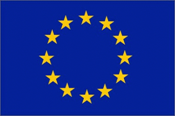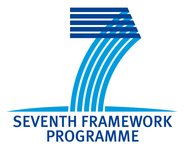Robocademy
ITN Robocademy

The Robocademy ITN will establish a European training and research network to develop key skills and enabling technologies in underwater robotics for the scientific and economic exploration of the oceans (e.g. offshore oilfield of the future). Through the close collaboration of leading research institutes, academia, industry, and SMEs in robotics, marine technology, marine science, and offshore industry, Robocademy will provide first-class training and research opportunities for ESRs. In well-defined and well-tutored PhD research projects, the Robocademy fellows will push the state-of-the-art in the area of robust, reliable and autonomous underwater robots. Specialized scientific training modules will enable the fellows to obtain both a sound basis in robotics and an introduction to topics that are specific to their research areas. This will be complemented by a high quality soft-skills training programme for and the opportunity to gain extensive on-site hands-on experience through secondments to maritime industry and oceanographic research institutes. Thus Robocademy will foster the formation of young professionals that are able to meet the urgent demand for highly qualified researchers and engineers in the growing field of underwater systems and robotics. For the European industry and scientific community, such specialists are crucial gain ground against competitors from North America and Asia. For the ESRs, the Robocademy training will open up excellent career opportunities in both academia and industry.
| Duration: | 01.01.2014 till 30.12.2017 |
| Donee: | German Research Center for Artificial Intelligence GmbH |
| Sponsor: |
European Union
Seventh Framework Programme of the European Union Marie Curie Training Network |
| Grant number: | EU financial support, Marie Curie Training Network, Grant Agreement Number 608096 |
| Partner: | Project partner: Heriot-Watt University, Tallinna Tehnikaulikool, Universitat de Girona, Natural Environment Research Council, NATO Science and Technology Organisation, National Technical University of Athens, Atlas Elektronik GmbH, Seebyte Ltd, Graal Tech SRL. Associated Project partner: Alfred-Wegener-Institut für Polarforschung, Univesitat Politecnica de Catalunya, Subsea7 Ltd., Marine Systems Institute, BP Exploration Operating Co Ltd., BAE Systems Ltd. |
| Application Field: | Underwater Robotics |
| Related Projects: |
ITN Stardust
Workpackage Close-Range Navigation and Manipulation of Space Debris and Asteroids
(02.2013-
01.2017)
|
| Related Robots: |
DAGON
|
Project details
Two thirds of our planet’s surface is covered in water. Our Oceans provide critical energy and food resources, and drive the patterns of our weather across the globe. To sustainably utilise and understand these resources and phenomena we need much‐improved means of access and of making measurement in our Oceans. Subsea robotics is of great importance to European economic and environmental interests. The Deep Water Horizon disaster in the Gulf of Mexico in 2010 underpins the oil industry’s desire to install, operate and decommission it’s infrastructure particularly in deep water as well as the environmental risks associated with subsea operations. Unmanned robots perform inspection, repair and maintenance tasks in a cost effective, safe and timely manner. As worldwide concern grows over global warming and pollution, autonomous subsea robots play an increasingly important role in making the essential measurements that develop our understanding and monitoring of key scientific phenomena. And as global threats to our national security grow, unmanned subsea robots are now routinely deployed to investigate potential threats in economically critical ports and harbours, and for humanitarian demining along our coastlines. Unmanned Underwater Vehicles (UUVs) do not only have to be sturdy and well-engineered. More importantly, they have to be equipped with advanced cognitive and reasoning capabilities to perceive and understand their environment and to act accordingly. The Strategic Research Agenda for Robotics in Europe issued by the European Technology Platform on Robotics (EUROP) in July 2009 emphasizes the strong future need for robots with higher levels of autonomy and reliability. Subsea robotics presents key challenges that are distinct from other domains, as a direct consequence of the medium and it’s physical properties. The Ocean medium is often moving, through currents, tides or wave action. The morphology of the robot’s physical design, and of its associated sensing and control systems must take this into account. Further, the Ocean is all but opaque to electromagnetic signal propagation, and offers limited optical visibility. Sound is therefore the key means of sensing and of signaling, as exhibited by many marine animals. Such acoustics presents key challenges of noise on sensor data of all kinds, and of very limited communication bandwidth. The latter limits the possibilities of direct operator control, enforcing a need for greater autonomy in the robot. Europe is in a strong competition with the USA and Canada in the field of underwater robotics. The market is dominated by American and Canadian manufacturers. Leading European oceanographic research institutes use robotic equipment from providers overseas. Promising young researcher leave Europe to join North‐American research institutes and industry specialized in underwater robotics. On the other hand, the market is growing. Leading industry studies by energy business analysts Douglas Westwood predict a worldwide spend of $1.8‐3.7 billion on autonomous vehicle technology in the period to 2017, responding to growth in deep water oil and gas, littoral security, climate change research, and EEZ landgrab mapping. Other analysts predict even larger investments in autonomous underwater technology as new offshore infrastructure is de‐manned in the Arctic, Gulf of Mexico, West Africa and South America, and as the growth in offshore renewable energy generation takes hold (wind and marine devices).
Further information on www.robocademy-project.eu


